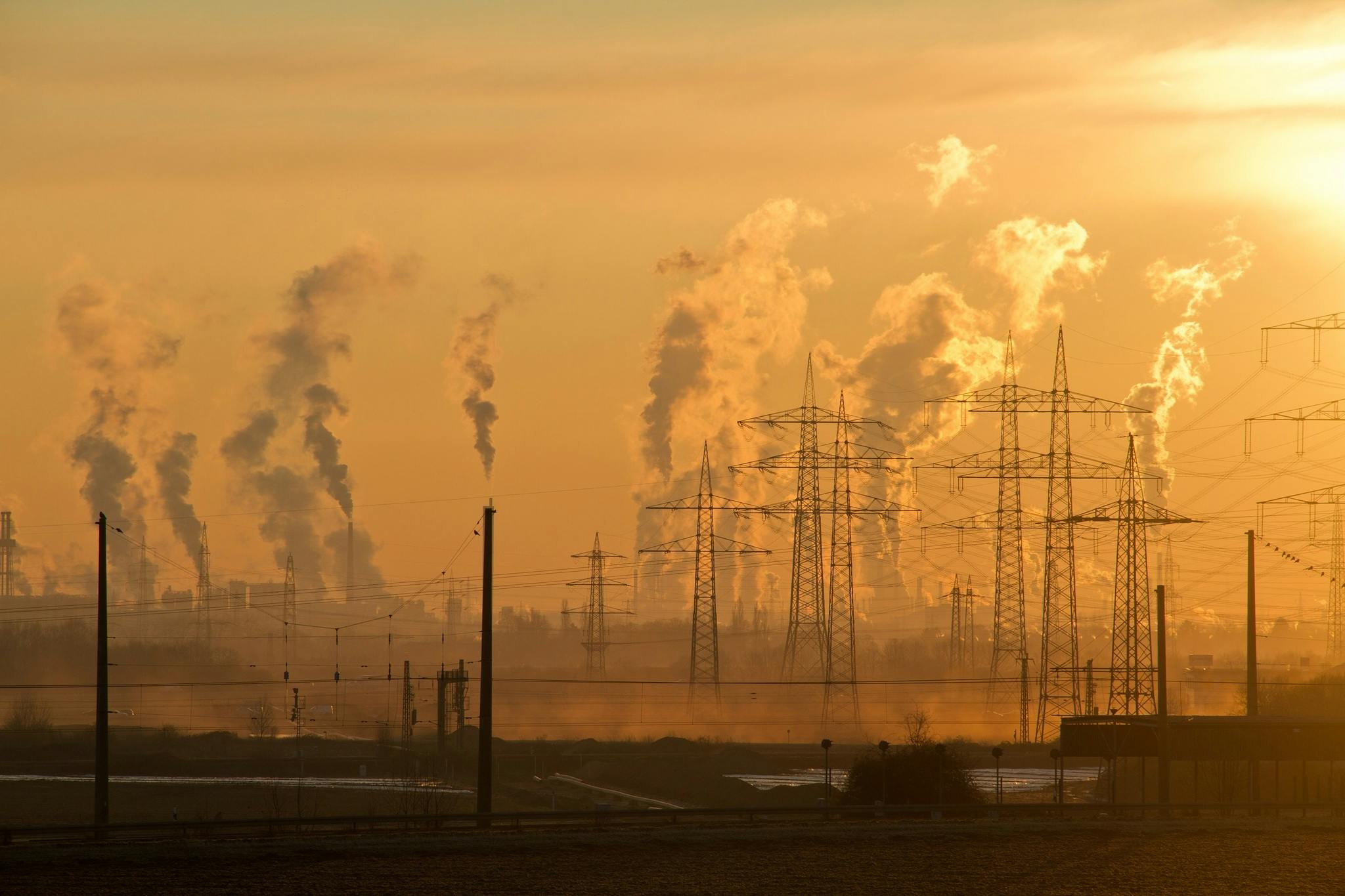How can the fashion industry reduce climate impact and help achieve the 1.5°C target?
In our previous blog post, we defined the 1.5°C target of the Paris Agreement, how our planet got to this current state of climate change, and the actions we must take to slow down global warming. Every sector of the economy will have to make changes—and soon—with the aim of reducing GHG emissions and investing in more sustainable technologies. Not only are setting these goals important, but it is also crucial that adequate and responsible action is taken to meet these targets.
As stated in the Mckiney article “Climate math: What a 1.5-degree pathway would take”, the five major shifts that need to happen are: reforming food and forestry, electrifying our lives, adapting industrial operations, decarbonizing power and fuel, and ramping up carbon-capture and carbon-sequestration activity. To successfully bring global temperatures down, all industries would have to significantly reduce carbon emissions by adapting greener practices and using renewable resources.
In this blog post, we will be focusing on the fashion industry, and how this particular sector of the economy can help to achieve the 1.5-degree target by slowing down, reducing, and minimizing the impacts of climate change and global warming.
Fashion and the planet
The fashion industry is responsible for 2-8% of global carbon emissions and 20% of wastewater. Most of the industry’s emissions come from material production, preparation and processing. However, a significant portion of emissions are associated with retail operations, consumer-use, and product end-of-life. This means that the entire fashion value chain plays a big role in GHG emissions worldwide, and would require both industry and consumers to work together to make a difference.

If the fashion industry continues to produce greenhouse gasses at its current rate, it is very likely that we will miss the 1.5-degree pathway by around 50 percent. As stated in the McKinsey article The fashion industry can reduce emissions across the entire value chain, it is estimated that the industry can reduce its annual emissions to around 1.1 billion tons, the equivalent to half of today’s figure. This will not be a simple or quick task. How, then, can the fashion industry reduce its carbon emissions and help achieve the 1.5-degree target in time?
Reducing emissions in upstream operations
As mentioned in our previous blog post, one of the main shifts necessary to reduce global carbon emissions is the transition to cleaner energy sources. Most industries have and still rely on burning fossil fuels as their main source of energy. The fashion industry is no exception.
By switching to cleaner energy sources and creating a renewable energy supply chain, every step of the value chain can reduce its carbon emissions, and altogether lower the industry’s total emission by a significant amount. Fashion companies and brands can make the transition by investing in cleaner operations through corporate groups such as the RE100 who are committed to 100% renewable electricity.

“Improvements in energy efficiency and a transition from fossil fuels to renewable-energy sources could deliver about 1 billion metric tons of emission abatement in 2030 across the fashion value chain.”
Decarbonizing a brand’s own operations
The fashion supply chain consists of many parts and steps. Ania Zoltkowski from Good On You defines it as “the process of tracing each step of the clothes manufacturing process, from sourcing of the raw materials, to the factories where those materials are made into garments; and the distribution network by which the clothes are delivered to consumers”.
Decarbonizing the supply chain can mean reducing packaging, minimizing returns, reducing waste production, using sustainably sourced and recycled materials, designing with circularity in mind, and more. If any, multiple, or all of these separate parts that make up the supply chain can convert to using cleaner practices, the fashion sector can minimize its carbon production and reduce its environmental impact.
“In theory, carbon neutrality means fashion brands must both reduce their emissions where possible and offset the remainder of their footprint by funding projects to remove carbon from the atmosphere elsewhere.”
Encouraging sustainable consumer behavior
Once a product leaves the production phase and is in consumers’ hands, the use phase determines how long a garment’s life will last before it is discarded as waste. Consumer behavior thus plays an important role in the environmental impact.
The fast fashion industry continues to pump out new collections in the form of micro-trends through accelerating production for profit, promoting quantity over quantity, and encouraging consumers to view fashion as disposable; it is estimated that the average American throws away nearly 81 pounds (or around 37 kg) of clothing every year. We are buying clothes more than ever, and throwing them away more than ever. Clothes that are discarded typically end up in landfill, leaking toxic chemicals and pesticides into the air, waterways, and the natural environment.
From a consumer’s perspective, there is more we can do than we might think. We have compiled a list of 7 tips on how to become a more conscious consumer to help you get started on your journey to a more sustainable and eco-friendly lifestyle. One way we can help our planet is by investing in higher quality and more durable clothing as opposed to shopping fast fashion brands that typically low in quality and not made to last. Taking care of your clothes by repairing or upcycling as opposed to throwing them out immediately, reducing washing and drying to save water and energy, shopping secondhand, and learning about proper recycling are great ways to minimize carbon emissions during consumer use.
For more on how to reduce our impact through sustainable fashion 👇
https://www.koup.co/blogs/the-koup-blog/slow-sustainable-fashion-how-do-we-reduce-our-impact
“The main levers in this effort are an increase in circular business models promoting garment rental, resale, repair, and refurbishment; a reduction in washing and drying; and an increase in recycling and collection to reduce landfill waste and move the industry toward an operating model based on closed-loop recycling.”
It’s not too late. Yet.
In recent years, we have been seeing more and more brands focus on sustainability, decarbonization, and other efforts to reduce the environmental impact of the fashion industry. This is a good direction we are headed towards, as it will require all sectors of the economy along with all phases of the supply chain to take part in successfully reaching the 1.5-degree goal. This is a collective effort, and we are all responsible.
The goal of the Paris Agreement is to limit global warming to below 2°C, and preferably to 1.5°C, compared to pre-industrial levels. At current emission levels, we will not be able to achieve a climate neutral world by mid-century, leading to irreversible changes to our global climate that will affect us all. There is still hope, and it’s not too late yet. However, this goal cannot be achieved if only some, and not all, sectors take action as soon as possible. Together we can prevent further warming of our one Earth, and it’s only together that we can make this happen.
References:
- https://www.mckinsey.com/business-functions/sustainability/our-insights/climate-math-what-a-1-point-5-degree-pathway-would-take
- https://news.un.org/en/story/2022/04/1115452
- https://www.mckinsey.com/business-functions/sustainability/our-insights/sustainability-blog/the-fashion-industry-can-reduce-emissions-across-the-entire-value-chain
- https://www.bbc.com/future/article/20200310-sustainable-fashion-how-to-buy-clothes-good-for-the-climate
- https://www.there100.org/about-us
- https://www.voguebusiness.com/sustainability/decarbonising-fashion-is-imperative-heres-why
- https://goodonyou.eco/what-is-a-clothing-supply-chain/
- https://goodonyou.eco/fast-fashion-facts/
- https://www.saturdayeveningpost.com/2018/01/ready-waste-americas-clothing-crisis/
- https://unfccc.int/process-and-meetings/the-paris-agreement/the-paris-agreement
Images:


Leave a comment
Please note, comments must be approved before they are published